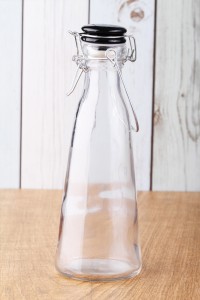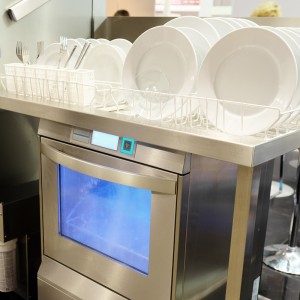It's nearly impossible to escape the constant message that we need to take better care of our planet, but many people become overwhelmed with the multitude of ways presented to “go green”. Although it might not seem like it, small actions do benefit the environment, and starting with a minor change is a step in the right direction. Below are some easy and inexpensive ways to make your home green.
Change Your Eating Habits

Small changes in your eating habits can reduce the amount of waste you produce and can also lessen demands on energy consumption.
- Buy foods in bulk to reduce packaging that eventually makes its way to landfills.
- Buy locally-sourced meats and vegetables. Supporting local farmers in your community reduces fuel consumption and pollution since food does not have to be transported as far.
- Drink water from reusable bottles instead of disposable plastic bottles.
Reduce Energy Consumption
It's easier than you might think to make your home more energy efficient. You can do lots of easy, inexpensive things that will add up to big reductions in energy consumption.

- Keep your refrigerator away from direct sunlight or the stove. Exposure to heat from the sun or your stove makes the fridge's compressor work overtime.
- Use the dishwasher. It might be surprising to learn that washing a full load of dishes in the dishwasher is more energy efficient than washing them by hand, especially if you have an Energy Star dishwasher.
- Change your air filter at least every three months. A clogged filter reduces air flow which causes your heating and air conditioning system to use more energy.
- Install a programmable thermostat and program it to reduce heating and cooling when you're away from home.
- Clean the lint trap to increase your dryer's efficiency by as much as 30 percent.
Green Decorating Ideas
Decorate your house with eco-friendly products that come from sustainable resources that don't harm the environment with toxic chemicals.

- Choose bamboo for hardwood floors. Bamboo matures over a few years compared to the decades it takes to replenish other hard woods.
- Use low-VOC (Volatile Organic Compound) paint. Most major paint manufacturers carry this paint which contains little to no volatile organic compounds. VOCs not only pollute the indoors with harsh odors, but they also cause smog and ozone pollution.
- Use organic linens that are made out of biodegradable pigments which do not contain chemicals that pollute the environment and the water.
Green Landscaping Ideas
When gardening or landscaping, avoiding toxic chemicals will keep the local environment healthy and foster growth for native plants and animals.

- Plant native plants in your garden. These require less maintenance and water since they're accustomed to the local climate and are supportive to indigenous wildlife.
- Composting reroutes millions of pounds of waste away from landfills back into the environment as fertilizer. The average person produces over four pounds of waste per day, and nearly 2/3 of this can be composted.
- Find pest-control products that are not made with harsh chemicals which could endanger children and animals in addition to polluting the area water supply.
- Collect rain water in a rain barrel and use it to irrigate your garden.
- Use a push mower. Gas mowers emit pollutants that contribute to global warming.
- In the autumn, sweep or rake your leaves instead of using a gas-powered leaf blower which emits high levels of carbon.
- Sweep your driveway instead of hosing it down to save water.
- Leave lawn clippings on the lawn after mowing. Clippings make great mulch, and they keep moisture from evaporating quickly, thus saving water.
It's easy and inexpensive to #GoGreen with any of these ideas. Even if you can't do everything on this list, try incorporating a few changes into your daily routine. Before you know it, these little changes will add up to big improvements for the not only the environment but your household as well.


